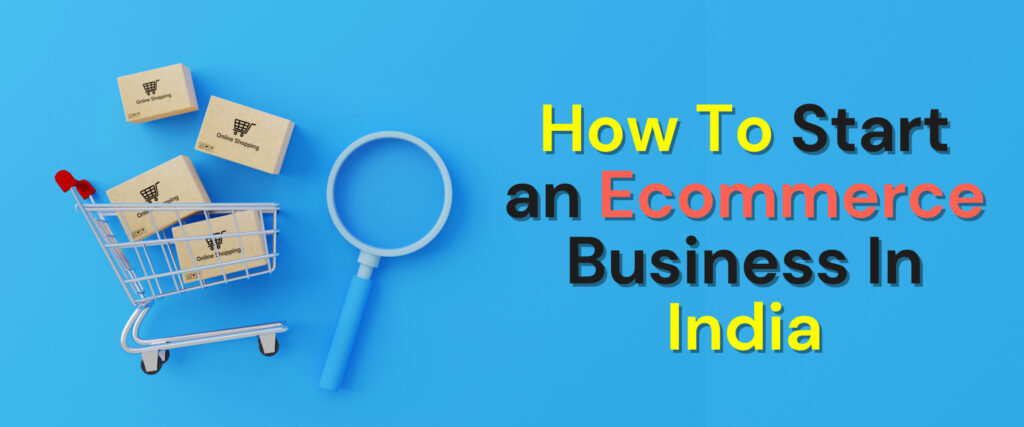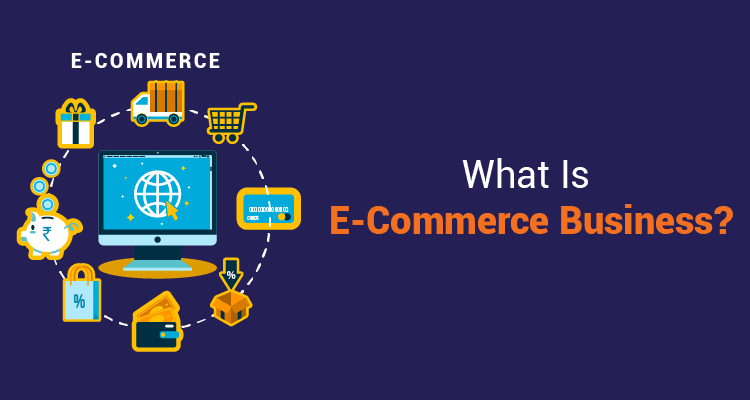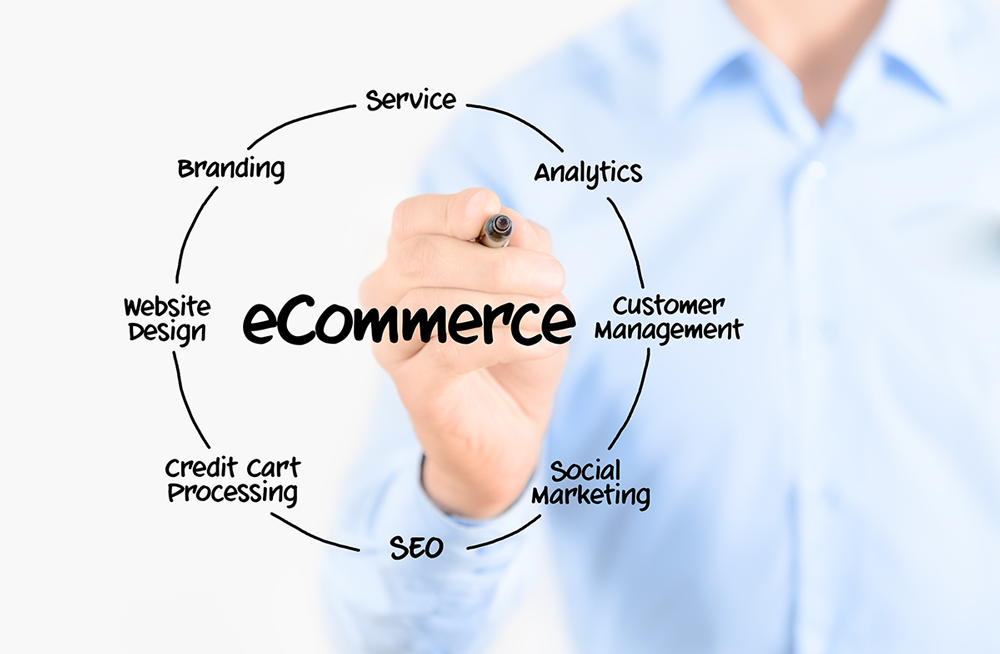How to Start an E-commerce Business: A Complete Guide

E-commerce Business sells goods, services and funds over the internet. Starting an e-commerce business is a lot like starting any company: You’ll need to create a business plan, get licenses and permits and set up dedicated finances. You’ll also need to choose an e-commerce website builder, source your products and market to online customers.
What is an E-commerce Business?

An E-commerce business is a company or commercial entity that conducts its transactions over the internet. E-commerce, short for electronic commerce, involves buying and selling goods and services online. This type of business leverages digital platforms and technologies to facilitate a wide range of activities, from marketing and sales to customer service and order fulfillment.
It is a is a company that sells products or services online. With an online store, you can serve customers around the world, and buyers can browse and make purchases at any time of the day.
How to start an e-commerce business

Starting an E-commerce business involves several key steps, from conceptualization to execution. E-commerce is on the rise, so you’ll need to consider how to stand out because everyone can use digital marketing for their business. Here are some points to get started.
Research e-commerce models and decide what to sell:
When starting an e-commerce business, understanding different e-commerce models and deciding what to sell are crucial steps. Their are Four basic types:
1) Business to Consumer (B2C)
B2C brands can sell different brands under one umbrella, such as Amazon, Walmart, and Alibaba.
- Description: Direct sales from businesses to end consumers.
- Examples: Amazon, Walmart, and any retail online store.
- Pros: Large customer base, easier to market, diverse product range.
- Cons: High competition, lower margins, customer service demands.
2) Business to Business (B2B)
B2B models, businesses sell products or services to other businesses. Orders tend to be recurring purchases.
- Description: Transactions between businesses.
- Examples: Alibaba, bulk suppliers, and industrial equipment vendors.
- Pros: Larger order sizes, long-term relationships, fewer competitors.
- Cons: Longer sales cycle, smaller customer base, complex sales process.
3) Consumer to Consumer (C2C)
C2C models tend to be online marketplaces that connect consumers to exchange and sell goods and services.
- Description: Consumers sell directly to other consumers.
- Examples: eBay, Craigslist, Poshmark.
- Pros: Low start-up costs, easy to start, used goods market.
- Cons: Trust issues, lower profits, dependency on platform rules.
4) Consumer to Consumer (C2B)
With C2B, individuals sell their goods and services to companies.
- Description: Individuals sell products or services to businesses.
- Examples: Freelance platforms, influencer marketing, stock photo sales.
- Pros: Flexible, diverse opportunities, no inventory needed.
- Cons: Inconsistent income, high competition, challenging to scale.
Identify your online business niche:
Identifying your online business niche involves a combination of market research, self-assessment, and strategic planning.
While it may seem counterintuitive, your chances of making it big in eCommerce are better when you start by thinking small—that is, when you start by defining a niche for your business. While it’s helpful to study the general trends, broad categories can be crowded with competitors.
After thorough market research and considering current trends, I have identified the niche of eco-friendly and sustainable home products. This niche caters to the growing consumer demand for environmentally responsible living and encompasses a wide range of products such as reusable kitchenware, organic bedding, biodegradable cleaning supplies, and energy-efficient home gadgets.
Write a business plan:
After you establish the foundation of your business, you’re ready to draft a business plan. This written document details your objectives and roadmap for finance, operations, and marketing. You can use it to get organized and be used to attract potential investors.
Our business will differentiate itself through a strong commitment to sustainability, exceptional customer service, and strategic marketing efforts.
By providing high-quality, ethically sourced, and innovative products, we aim to cater to the growing market of eco-conscious consumers. Our business will differentiate itself through a strong commitment to sustainability, exceptional customer service, and strategic marketing efforts.
Choose a business name and start building your brand:
Choosing a business name can be fun, but it requires a bit of strategic thinking. In addition to a unique yet uncomplicated name that clearly explains what your product is, you’ll also want to check if the web domain, social media handles, and legal name are available. Do your research to make sure it translates well across cultures, especially if you aim to go global.
In building your brand, you’ll need to design a logo that will be placed on all packaging, website design, and marketing materials. Eventually, you may want to hire a designer who can translate your brand’s ethos into beautiful web visuals.
Register your business:
Before you begin selling, you’ll need to register your business by choosing a legal structure, applying for an employer identification number (EIN), and obtaining other permits and licenses specific to your chosen business model. To establish GreenNest Living as a recognized business entity, the next crucial step is to complete the registration process.
As a Limited Liability Company (LLC), GreenNest Living will first ensure that the business name is available and compliant with local naming regulations. Following this, we will file the Articles of Organization with the state’s Secretary of State office. These articles will outline essential details such as the business name, address, registered agent information, and managerial structure.
Obtaining an Employer Identification Number (EIN) from the IRS will be necessary for tax purposes and operational activities, including hiring employees if required. Additionally, we will register for state and local taxes, ensuring full compliance with all applicable regulations.
Create your e-commerce business website:
With the paperwork signed and your business officially registered, the next step is to create an e-commerce website. The website is the “storefront” for your business for customers to arrive, browse, and place items in their shopping cart. Your business website and its functionality are critical to your success.
To start, you’ll need a domain name that matches your business name. Then, you’ll need to select an e-commerce platform that suits your bandwidth for creating and maintaining the online store. The most common type is an all-inclusive software (like Shopify), on which you can conduct business operations such as managing inventory, shipping orders, and more.
Shopify: This popular e-commerce platform is all-inclusive and user-friendly, with plenty of customization options. With this hosted, software-as-a-service (SaaS) platform, you can choose from several subscription options depending on your business needs.
Squarespace: Known as a platform for building websites with modern templates, Squarespace also offers e-commerce capabilities. It is user-friendly but does not offer as many customizable e-commerce features as Shopify.
Woo Commerce: Woo Commerce is an open-source plug-in that you can add on to start selling on your WordPress site. It is free to download and offers a wide range of e-commerce tools, best for entrepreneurs with prior technical experience.
Magento: If you’re tech-savvy, you might want to use Magento, an open-source platform that allows you (or a hired developer) to customize every element of your online store.
Source or develop your products:
Then you’ll need to source the products you’re going to sell. If you’re selling physical products, you may need to make them yourself or work with a manufacturer. If you are a craftsperson, you’ll want to produce enough inventory to last the first few months. That might mean creating one of each color and size of a clothing line, or twenty of each ceramic pot.
A key decision at this point: Are you going to order products in bulk and keep inventory in stock? If so, you’ll need to think about storage space and raising capital to order goods upfront. However, you’ll have the power to ship items yourself.
Other businesses choose to rely on dropshipping, in which products are manufactured or sourced at the time the order is placed. In general, dropshipping may keep your overhead costs lower, but it can be more difficult to manage since inventory levels and shipping will be out of your hands.
Launch and market your business:
Once you have successfully launched the business, you can begin monitoring your metrics and key performance indicators (KPIs) as your business grows. Continue to experiment with different types of digital marketing to drive traffic to your brand.
Amid the inventory management, logistics, and marketing, you’ll want to ensure that your shipping and fulfillment go smoothly for every customer. It is wise to prepare contingency plans in case anything goes wrong.
Many e-commerce website builders include some marketing features, which can help you do things like create social media ads or send emails to customers when they’ve abandoned their carts.
Tips for starting an e-commerce business

If you want to start an e-commerce business then it can be exciting and rewarding. The journey to creating a successful e-commerce business requires motivation, strategy, passion, and a stroke of luck. So, Here are some tips to help you get started:
1) Start Small:
You don’t have to invest in hundreds of products at first. If you’re a craftsperson, create an Instagram account and simple branding to gauge interest. If you’re sourcing products, give yourself a timeline to procure items, create a website, and soft-launch with targeted Google or Facebook ads. Then, build your business from there.
2) Keep up with Trends:
Social commerce is important to consider, as it was one of the biggest trends in e-commerce in 2024, along with artificial intelligence, augmented reality, and the rise of TikTok.
3) Experiment with Marketing:
People won’t know about your business unless you promote it. Thankfully, there are many ways to conduct A/B testing on platforms like Google Ads with fewer dollars before launching a major campaign.
4) Cultivate a loyal customer base:
Your e-commerce business needs customers who appreciate your products enough to buy them more than once and, ideally, customers who will promote them to their networks.
Establishing a strong brand presence on social media can help you build a following. But the more information you can gather from your customers, the more you can market directly to them, whether that means creating an email marketing campaign, sending discount codes through text message or letting them know where your booth will be at an event in their region.
5) Invest in multichannel selling:
Loyal customers may be willing to visit your website frequently. But to reach new ones, you might have to meet them where they are — which might be on Amazon, Instagram, TikTok or elsewhere.
Start with the platforms where your customers are most likely to be, launch those integrations and then see how they perform. You can add platforms later if they fit into your business strategy.


